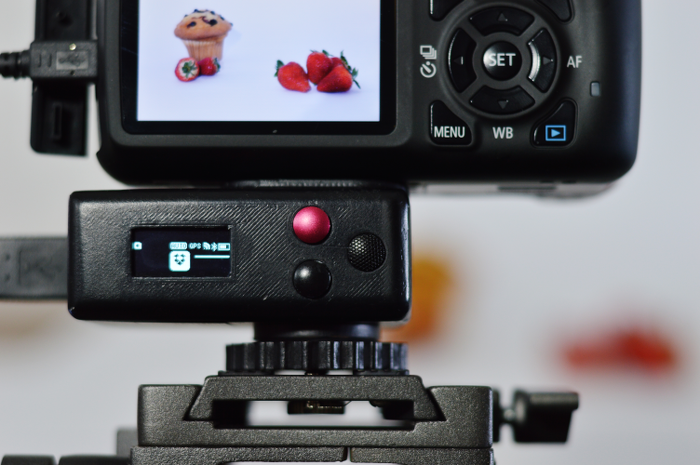
The Lumera Labs team, which pitched the project on Kickstarter, argues that the smartphone in photographers’ pockets is underutilized. “(C)ellphone manufacturers create amazing devices completely immersed in the cloud,” they wrote, and have connectivity which many DSLRs lack. Lumera seeks to bridge the gap by leveraging a handful of common technologies: USB, WiFi, and Bluetooth Low Energy 4.0.
Once plugged into a camera via USB and affixed to its tripod thread (the team is working on a hot shoe design), the Lumera can share photos to social networks or cloud storage with a dedicated button. An inbuilt OLED panel displays progress during transfers and the status of the connection between the Lumera and its companion app.
But inputs go both ways. The Lumera app, a forthcoming download for iOS and Android, will let a device paired with the requisite hardware function as a viewfinder. It’ll also have remote capabilities for capturing videos, photos, and timelapses. It will also present an interface for adjusting camera parameters like ISO, white balance, aperture, and format remotely.
Other features are a little more esoteric. In conjunction with the app, Lumera can geotag photos with a built-in GPS in some models, or apply processing algorithms for High Dynamic Range (HDR) and stereoscopic 3D. Lumera Labs is also encouraging the creation of third-party modifications by building Lumera atop “open hardware” and pledging to publish the device’s firmware.
Backers who donate at the $170 CAD ($150 USD) level save on a Lumera without GPS hardware; the higher-end model starts at $220 CAD (about $200). The pledge drive hasn’t neared its funding goal yet — it stands at $47,594 out of $90,000 — but has 26 days remaining.
Editors' Recommendations
- Your $1,000 smartphone is a bad deal. These cheap phones prove it
- How your smartphone could replace a professional camera in 2023
- What is vapor cooling? The fascinating tech keeping your smartphone cool
- Samsung Home Hub uses A.I. to make your home smarter
- The best touchscreen gloves for your smartphone


